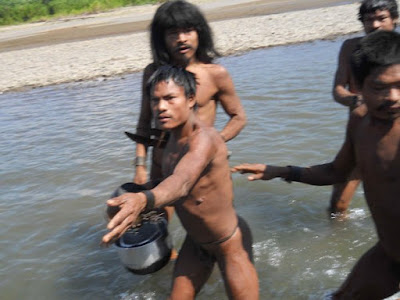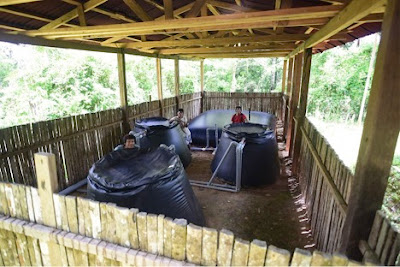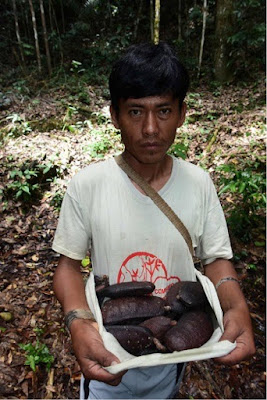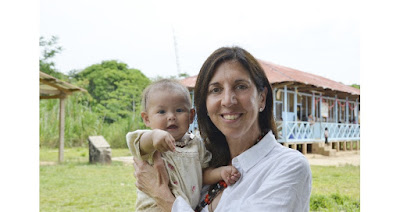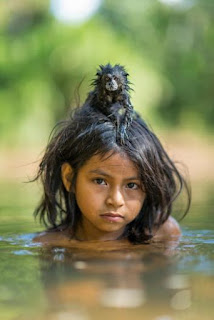I visited Peru in March of 2015 in the company of retired FUNAI agent José Carlos Meirelles and Brazilian physician Douglas Rodrigues, both with decades of experience among such peoples. My visit was an attempt to help the Peruvian Culture Ministry better address the precarious situation of isolated indigenous peoples along the Peru-Brazil border. It took years for the Peruvian government to even recognize the fact that isolated indigenous groups still exist in some parts of the Peruvian Amazon. Once such peoples were officially recognized in Peru about a decade ago, the official state policy, promoted by indigenous federations such as the Federacion Nativa de Madre de Dios (FENAMAD), has been “no contact.” Whereas in past years, religious and other organizations have sought to initiate contact with such isolated indigenous peoples, typically resulting in their decimation and cultural assimilation, this more enlightened, recent policy has recognized isolation as a form of cultural self-determination that should be respected and enforced.
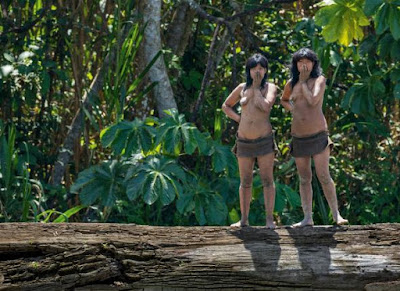 |
| Mashco-Piro women on the banks of the Madre Dios river. Photo: Charlie Hamilton James, National Geographic, June 2016. |
I first coined the term “voluntary isolation” in an open letter to Mobil Prospecting Peru protesting this company’s seismic exploration in the Rio Piedras known to be inhabited by Mashco-Piro and perhaps other poorly known indigenous groups, referred to at that time with inaccurate and pejorative terms such as “uncontacted,” “Stone Age,” “primitive,” “uncivilized,” or “naked.” The point of the term “voluntary isolation” is to recognize this situation, not as an accident of nature or history — a human group lost in the backwaters of human evolution — but rather as a conscious choice of these indigenous peoples to isolate themselves from outsiders, often due to disastrous prior experiences, as a mode of survival and self-determination.2 The term seemed to catch on, initially through the activism of FENAMAD and the International Working Group on Indigenous Affairs in Peru, and ultimately spread to neighboring Amazonian countries like Brazil, Colombia and Paraguay.
What do we do when a group of isolated people, such as the Mashco-Piro along the upper Madre de Dios River, who had previously rejected all attempts at “contact” by missionaries, scientists, government agents and nearby indigenous brethren, have suddenly emerged along river banks, calling to tourist boats and loggers asking for food, clothes, and metal implements? Mashco-Piro bowmen have raided legally recognized native communities to take food and trade goods, sometimes wounding and even killing apparently inoffensive indigenous “brethren” with their arrows.
Faced with such difficult challenges, one Peruvian Culture Ministry representative asked the Brazilian specialists, “Don’t we need a new category to refer to these people? ‘People in sporadic contact’ perhaps?” This person, and others we met during this visit of exchange between Peru and Brazil, seemed to be contorting the language to find ways of respecting the inviolable principle of “no contact.” Meirelles responded in his characteristically sardonic manner: “Can a person be considered ‘sporadically pregnant’? No. Either they are, or they aren’t.”
 |
| An evangelical missionary communicates with a group of Mashco-Piro through a local Piro interpreter, 2014. |
Viewing numerous photographs of Mashco-Piro individuals approaching boats, receiving clothes, metal implements, food, even a Coca Cola bottle, Meirelles commented: “Contact has already happened. You people are in denial.”
…
The official Peruvian policy of “no-contact” is reinforced by vehement, idealistic media campaigns by indigenous rights organizations and concerned individuals who post on social media networks — “leave them alone!” While their intentions are of course noble, such a simplistic view of the complex and quickly changing situation tends to romanticize and fetishize the condition of “isolation” as a pristine, natural, unadulterated state of the last autonomous, free peoples of the planet beyond the clutches of capitalism, organized religion and the state. People forget that the very state of “isolation” is most often a historical product, a conscious choice by certain groups of people, in certain moments, to defend themselves from moments of violence and territorial invasion, notably during the Rubber Boom at the turn of the 20th century. For this very reason I have resisted the idea that such peoples should be referred to as “uncontacted.”
 |
| Mashco-Piro children remove clothing and food from a tourism boat. Photo: Jaime Corisepa/FENAMAD |
As Felipe Milanez has written, “Contact is a myth: it is a colonial myth.” It is a myth that fetishizes as a primordial condition — “uncontacted,” autonomous, free, beyond the state — what is in fact a historically contingent response. The response of isolated peoples is evolving, in some cases rapidly, in a rapidly changing world impacted not only by roads, mining, logging, gas pipelines, and colonization, but also by global warming, environmental change, and changing social relationships with neighboring peoples.3 It is only by looking beyond these myths and the idealistic, sometimes naïve notions they evoke, that scholars and supporters of indigenous rights and the relevant government institutions can develop policies that defend the long-term rights of survival, territory and self-determination of indigenous peoples, rather than blindly defending their own fantasies about them.
.....
Excerpt: Full text at Tipiti 14(1): 135-137 (article 8)
Read more from the special forum on isolated peoples at Tipiti 14(1), with articles by Felipe Milanez & yrs truly, Lucas Bessire, John Hemming, Minna Opas, and Warren Thompson & Obed Garcia
Read more on isolated indigenous peoples from this blog:
Mashco-Piros on the verge
Too-close encounters
Quiet war in the Amazon
Forget colonial myths
Read more on isolated indigenous peoples from this blog:
Mashco-Piros on the verge
Too-close encounters
Quiet war in the Amazon
Forget colonial myths
1. Shepard, G.H. 2002. “Prólogo.” In: Huertas, B., Los Pueblos Indígenas en Aislamiento: Su lucha por la sobrevivencia y la libertad. Lima: IWGIA, 11-14.
2. Shepard, G.H. et al. 2010. “Trouble in Paradise: Indigenous populations, anthropological policies, and biodiversity conservation in Manu National Park, Peru.” Journal of Sustainable Forestry 29(2): 252-301.
3. Walker, R. S., and Hill, K. 2015. “Protecting isolated tribes,” Science 5 June 2015: 1061.
